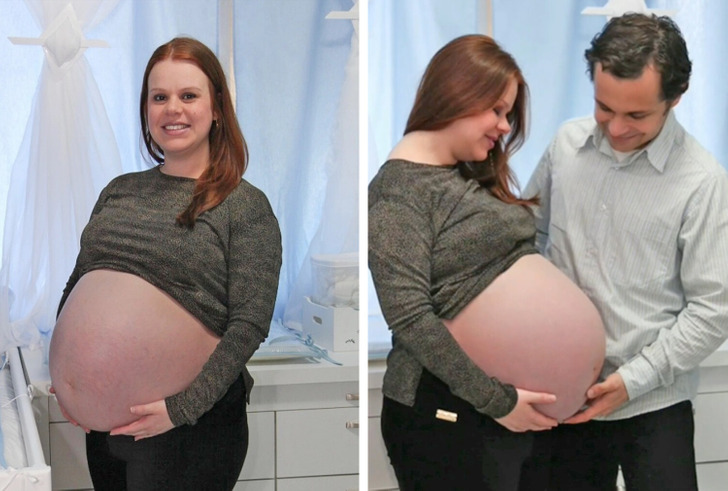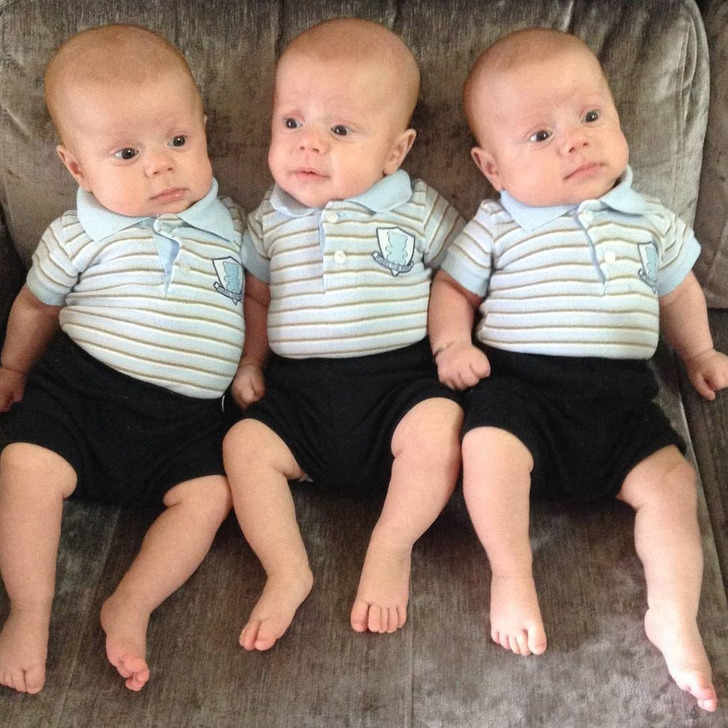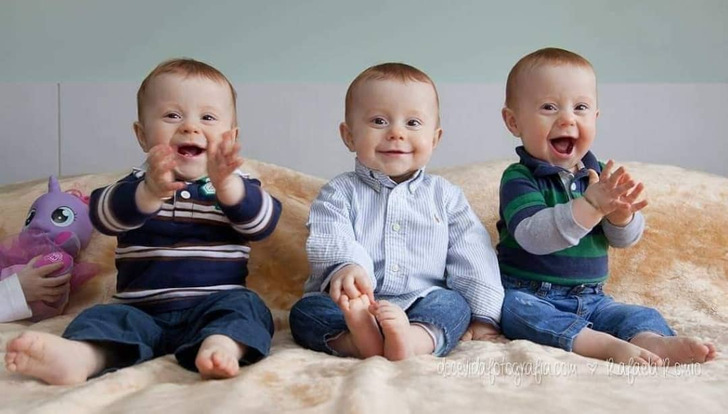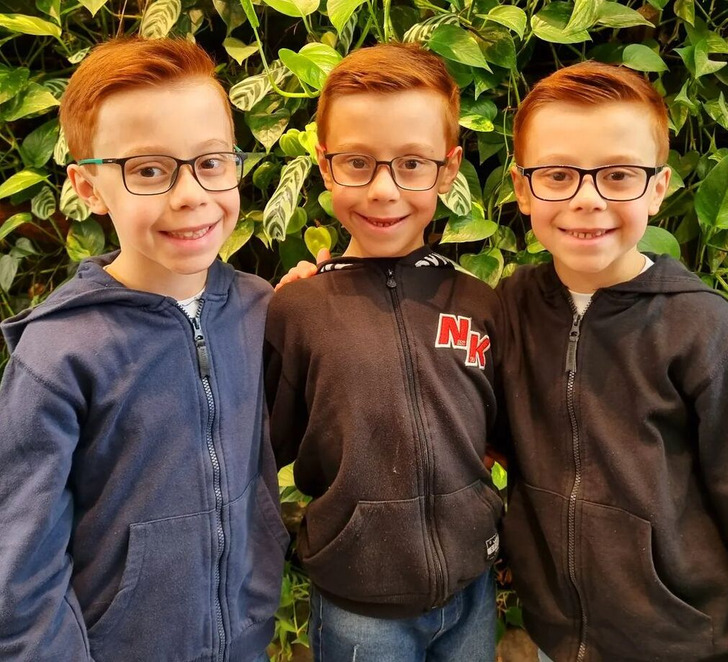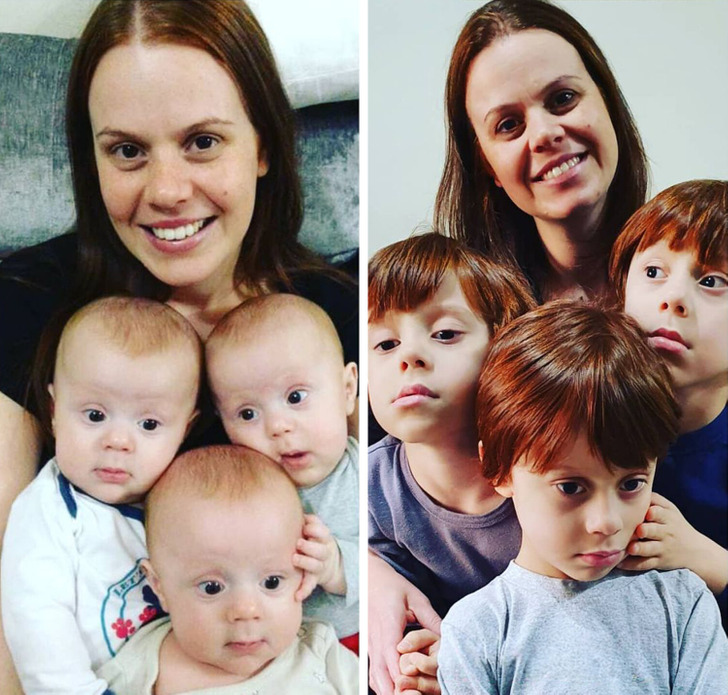My cousin has twins and the only way you can tell them apart is one has a mole on his left wrist, but they were always dressed alike! I love that these triplets are dressed differently because the confusion on three would drive somebody crazy!!
What the Super Rare 100% Identical Triplets, Whom Even Parents Cannot Distinguish, Look Today
Michelle and Mauricio Kaiser planned to have a second child, but during pregnancy, they found out they were expecting triplets. The most curious thing is that their sons are 100% identical, which happens only once in 10,000 cases. They are so similar that even the parents cannot always tell them apart.
A journey that began full of emotions.
The story began with the couple’s attempt to expand their family, with their eldest daughter Monica being just a year and a half old at the time. Little did they anticipate the extraordinary turn their lives would take when a routine pregnancy test revealed not one, not two, but three heartbeats echoing within Michele’s womb. What makes it even more extraordinary is that Michele’s pregnancy was all natural, without the need for any treatment.
The news of triplets sent shockwaves through the Kaiser household, prompting a flurry of emotions ranging from disbelief to overwhelming happiness. Michele recalls that in the surreal moment they learned of the pregnancy, they never imagined that three would come.
One more surprise was about to come.
What followed was a journey marked by unexpected twists and turns, as the couple navigated the complexities of a triple pregnancy. Despite the initial shock, Michele and Mauricio embraced the miraculous journey, eagerly anticipating the arrival of their trio.
As the pregnancy progressed, medical revelations added layers of intrigue to the already extraordinary tale. Initially informed that two of the babies were conceived from a different egg, the couple realized they would have fraternal twins, with an uncanny resemblance shared by two of the siblings.
However, as time went by, with all of the three kids growing so much alike, they decided to investigate a bit further. A subsequent DNA test conducted almost a decade later revealed a stunning truth — Matheus, Murilo, and Marcelo were not just brothers; they were 100% identical triplets, a phenomenon so rare that it defied conventional wisdom.
They grew up even more identical.
Despite the difficulties posed by raising triplets, Michele and Mauricio embraced their roles as parents with grace and determination. Through countless doctor’s appointments, sleepless nights, and moments of uncertainty, their unwavering commitment to their children remained firm.
As the triplets grew, so did their individual personalities. But one thing stays firm between them: they want to remain to look like each other. Michelle recalls one moment that she wanted them to choose different hairstyles, to embrace each personality. But they chose to keep cutting their hair the same as always, one twin as similar as the other.
While their physical resemblance may stun even the keenest observer, Michele and Mauricio created a secret trick to set each child apart: the color of their glasses. Marcelo wears red, Murilo wears green and Matheus wears blue.
Today, the family actively manages their Instagram and shares glimpses of their life. They are cheerful and active, enjoying vacations and having fun together. It seems that raising four children is not a burden for them at all. Although, as Michelle confessed, she hardly remembers herself between the ages of 31 and 33. That’s exactly when the triplets were born. It can indeed be tough for her and her husband at times.
However, there are moments that brighten even the most challenging days. Once, she went to a glasses store with her sons. Someone said to her, «Triplets? That’s a blessing!» Michelle writes on her page: «Sometimes we forget how wonderful it really is. I’m lucky to have 4 wonderful children who, besides being my kids, are my best friends today. We are truly happy.»
How rare is an identical triplet birth?
Identical triplets are an exceptionally rare occurrence. The formation of identical triplets, also known as monozygotic triplets, involves a single fertilized egg splitting into three separate embryos. This splitting process can occur at different stages of development, resulting in three genetically identical individuals.
The rarity of identical triplets comes from the uncommonness of the spontaneous division of a fertilized egg into multiple embryos. According to medical literature and statistics provided by experts in the field, the incidence of identical triplets is estimated to be as low as about 1 in ten thousand. This rarity makes identical triplets one of the rarest forms of multiple births.
Factors such as genetic predisposition, maternal age, and fertility treatments can influence the likelihood of conceiving identical triplets. But even under optimal conditions, their occurrence remains extremely rare. The spontaneous and simultaneous development of three genetically identical embryos represents a remarkable anomaly in the natural process of human reproduction.
Identical triplets are a rare phenomenon, whereas identical twins are more commonly seen. Take a look at these young women who have earned the title of the most identical twins in the world.
Comments
Related Reads
At 17 Months, He Was 70lb—Now at 30, His New Look Stuns Everyone

Richard Gere’s 24-Year-Old Son Caused a Sensation on the Red Carpet, and People Say He’s More Handsome Than His Father

15+ Facts That Reveal Even More Mysteries of Our World
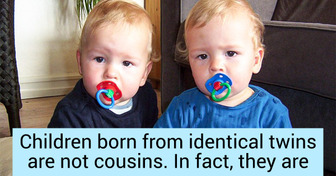
Meg Ryan’s “Unrecognizable” Appearance Sparks Controversy as She Returns to the Oscars After 27 Years

“It Looks Like She Dissolved Some of That Awful Filler She Had,” Jennifer Aniston Debuted a New Look

“Let That Go and Age Naturally,” Nicole Kidman Stuns in Nude Dress, but Her Appearance Sparks Heated Controversy

Shiloh Jolie’s Transformation From “Little Dude” to Teenage Era
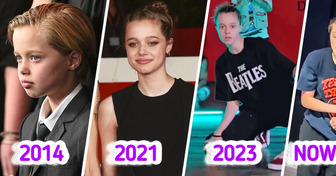
Johnny Depp, 61, Stuns Fans with Drastic New Smile After Years of “Rotten” Teeth

These Are the 10 Most Beautiful Women Based on Scientific Criteria

“This is Unacceptable!” People React to Jennifer Lopez’s Unrecognizable New Face

Salma Hayek, 57, Delighted Everyone With Her Bikini Body. People Are Confident That She Is Just as Beautiful as She Was Years Ago

Kate Middleton’s First Post-Surgery Pictures Spark New Rumours She Looks Unrecognisable

